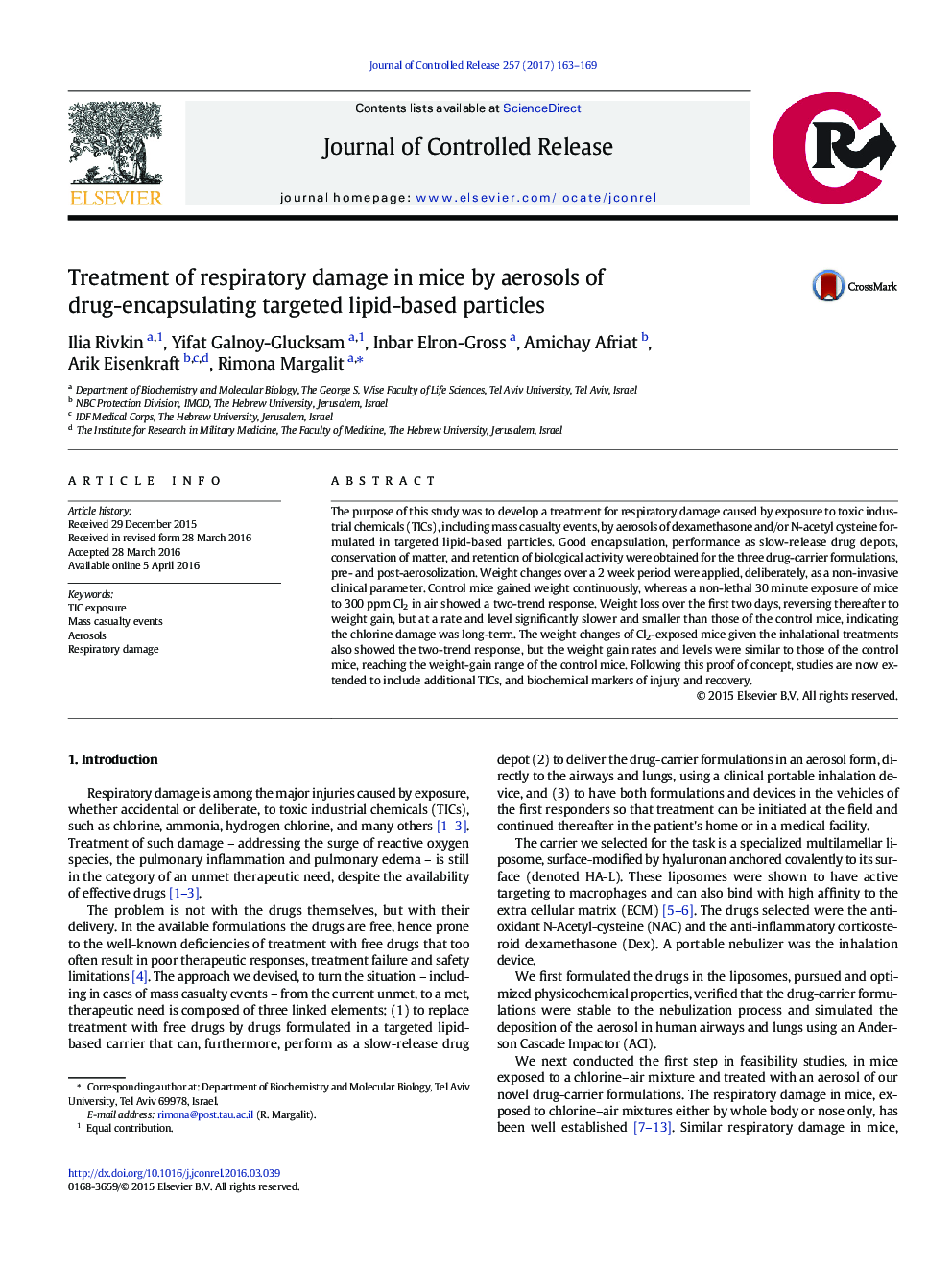| Article ID | Journal | Published Year | Pages | File Type |
|---|---|---|---|---|
| 5433700 | Journal of Controlled Release | 2017 | 7 Pages |
The purpose of this study was to develop a treatment for respiratory damage caused by exposure to toxic industrial chemicals (TICs), including mass casualty events, by aerosols of dexamethasone and/or N-acetyl cysteine formulated in targeted lipid-based particles. Good encapsulation, performance as slow-release drug depots, conservation of matter, and retention of biological activity were obtained for the three drug-carrier formulations, pre- and post-aerosolization. Weight changes over a 2Â week period were applied, deliberately, as a non-invasive clinical parameter. Control mice gained weight continuously, whereas a non-lethal 30Â minute exposure of mice to 300Â ppm Cl2 in air showed a two-trend response. Weight loss over the first two days, reversing thereafter to weight gain, but at a rate and level significantly slower and smaller than those of the control mice, indicating the chlorine damage was long-term. The weight changes of Cl2-exposed mice given the inhalational treatments also showed the two-trend response, but the weight gain rates and levels were similar to those of the control mice, reaching the weight-gain range of the control mice. Following this proof of concept, studies are now extended to include additional TICs, and biochemical markers of injury and recovery.
Graphical abstractA. The experimental set-up. B. Impact of the liposomal inhalational treatment on chlorine-exposed mice at day 2 and day 4 from exposure and therapy.Download high-res image (185KB)Download full-size image
